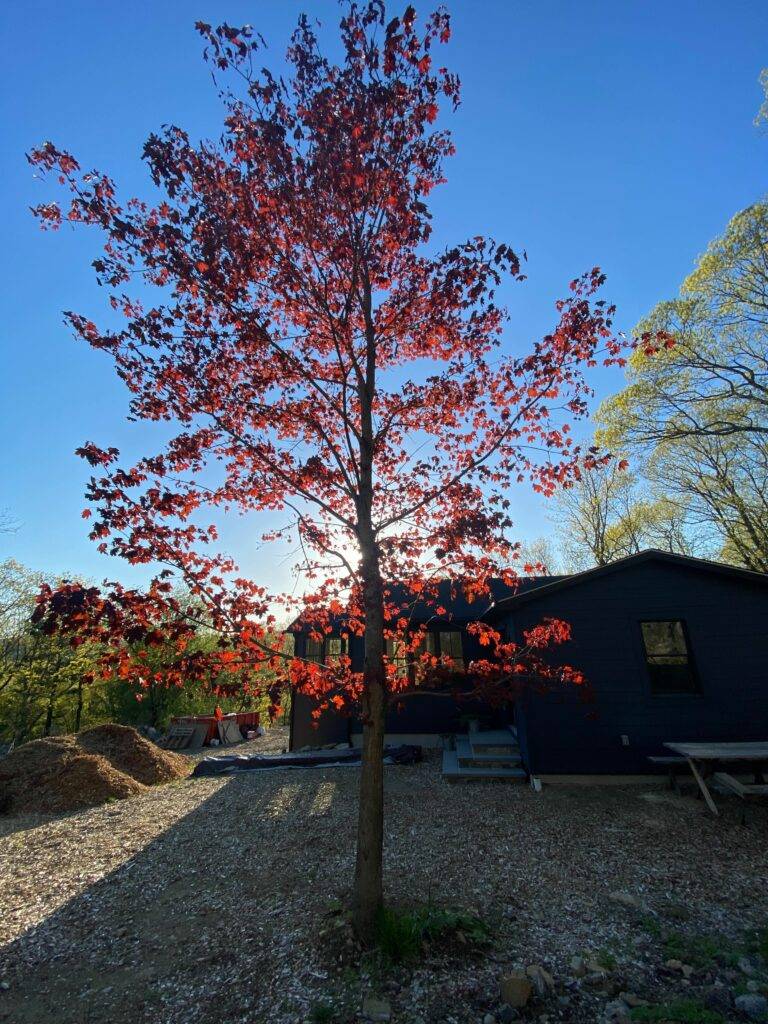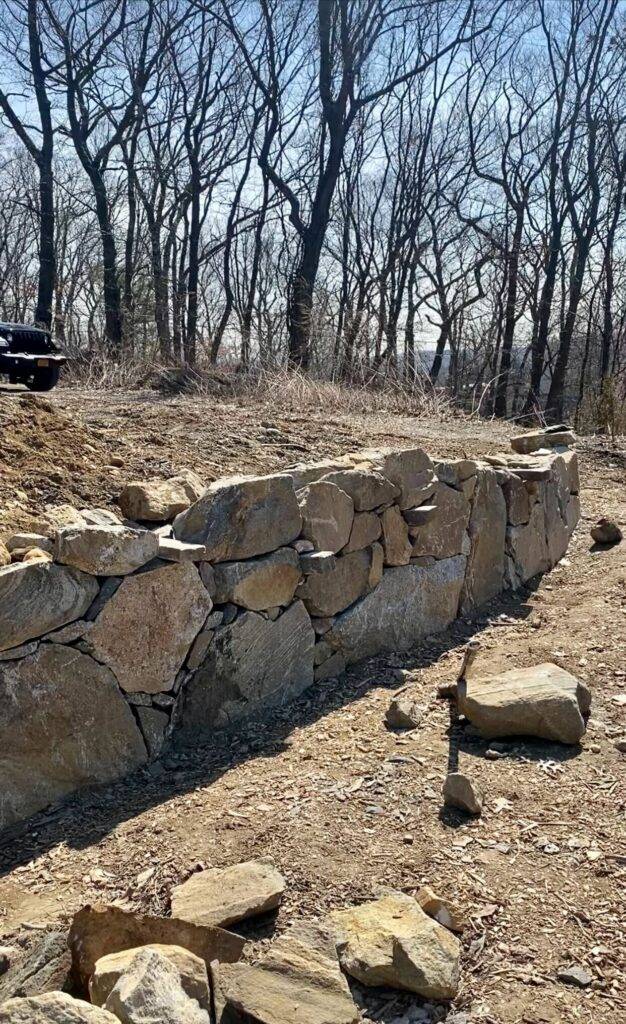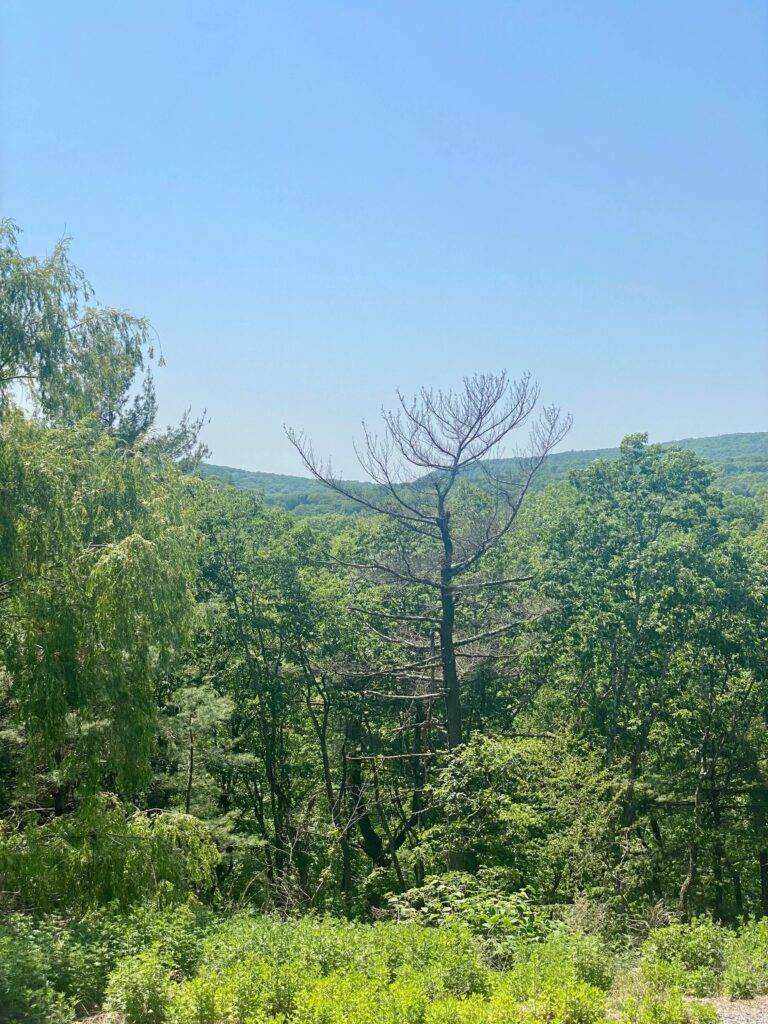If houses can have good bones, this acre has good trunks.
Check out the previous chapters of the Cabbage Dispatch (and more) here.
I used to live in New York City, near Central Park, and loved walking to Bethesda Fountain or around the reservoir. Some sections of the park are meticulously manicured, while others look wild and untouched. Cultivated paths take you up hills, around trees, over and under bridges. But my favorite thing about Central Park is the desire lines — the seemingly spontaneous paths made by people who veer off the official routes. I’m sure they’re a headache for the parks department, but I love what desire lines represent: efficiency, freedom, human nature, and humans in nature.
When I first saw The Cabbage, everything was covered in snow, but I was struck by the natural landscape. The weeping willow on the southern edge of the property was grand and elegant, even without its leaves. Densely packed woods speckled with boulders circled the property, creating a natural privacy screen. A majestic mature pine offered a welcome splash of green amidst the rolling hills of the protected Hudson Highlands State Park Reserve, home to a section of the Appalachian Trail. If houses can have good bones, this acre has good trunks.
What I didn’t know was that underneath the pristine blanket of snow was very rocky soil, full of dormant Mugwort and Japanese knotweed, and that when the ground warmed those would be the first things to grow. While excavators, dumpsters, and delivery trucks tore up the yard, any attempt at landscaping was futile. So, I let the weeds grow and observed. I did a lot of walking around, charting my own desire lines and using a plant app to identify what else was growing around me. My uncle Bill, a forest steward in Massachusetts, helped identify several invasive tree species, including a large Tree of Heaven, which we promptly chopped down so that sunlight could reach the pine saplings below.
On one of my walkabouts, I found an old oil tank. At seven feet long and five feet in circumference, it was massive, and heavy, but also durable with a beautiful rusty patina. I decided to upcycle it. The two ends became planters for pollinator gardens, one of the center rings became a fire pit, and the other center ring became a log holder. These garden-adjacent projects kept my green thumb satisfied while there was still too much commotion to plant anything.
I also did a consultation with One Nature, an environmentally-focused landscaping firm. They gave me a few tips that would help prep the land for future gardening success, including spreading a layer of wood chips on top of the dirt to add organic matter. And, most important, that tree trimmers may need to empty their trucks midday and are often willing to drop off their refuse for free. That same week I drove past tree trimmers on the side of the road, their truck almost full to the brim with wood chips. I pulled over and told them if they needed a nearby place to unload, I had just the spot.
When I pulled up to The Cabbage the next day, there was a giant pile in my front yard. I asked a few more tree trimmers and suddenly, I was rich in wood chips. The only downside was that I had to spread them. So, in between DIY projects inside, I would rake a pile down. Soon my yard went from loose brown dirt to an oasis of chopped tree parts. The wood mulch has done a great job of suppressing dust and mud and in a few years, when it’s fully decomposed, it will add much needed nutrients. In the meantime, I still have a five-foot pile in my sideyard to spread.
Another thing I am rich in: rocks. So many rocks of all sizes. The big ones came from digging new septic lines and were dumped in a pile on the edge of the property. I used a lot of them to fix and extend the pre-existing retaining wall separating the driveway from the backyard. I purchased boulder slab steps to install in the place where a desire line had formed. I built a smaller rock wall in the front yard, creating a proper rock garden that decorates the slope up to the fire pit. Now that I’ve established boundaries and paths with hardscaping, I can begin to think about what to plant.
I want to rewild this acre with native flowers, bushes and trees. Instead of a grass lawn that needs mowing, I’m considering ground covers, like creeping thyme and clover. I’m gradually filling the rock garden with some native transplants a friend gave me, including echinacea, phlox, sedum, bee balm, and black-eyed Susan. Once I’m settled at The Cabbage, I’ll build a vegetable and herb garden off the kitchen. And once that is done, I’ll find the next project — a small pond, bat houses, a wildflower meadow.
This spring marks two years of watching the landscape transform through the seasons. Even in that short span of time, so much has happened. The majestic pine died during last summer’s drought, leaving behind a skeleton even more fascinating. I’m hopeful it will become the perfect perch for passing birds of prey. A rabbit has taken up residency behind the shed, for now. The mugwort and Japanese knotweed are back with a vengeance, as are a few young bamboo shoots. And, without the invasive Tree of Heaven, a tall Black Locust tree, adorned with generous clusters of white flowers, is now in view from the dining room. Apparently it had been there all along, just waiting to be appreciated.
My favorite native perennials (Zone 6)
- Allegheny Sneezeweed
- Black-eyed Susan
- Blue Cohosh
- Coneflower
- Cranesbill
- Joe-Pye Weed
- New England Aster
- Solomon's Seal
- Wild Columbine
- Wild Ginger
- Bee Balm
- Sedum ternatum









